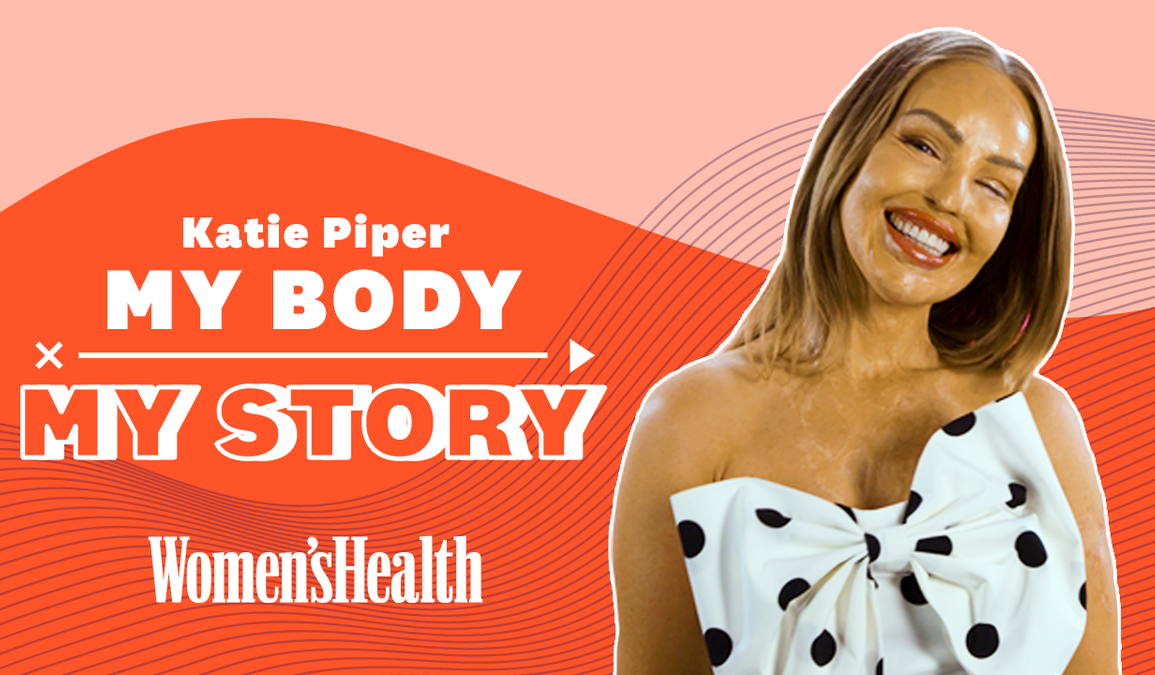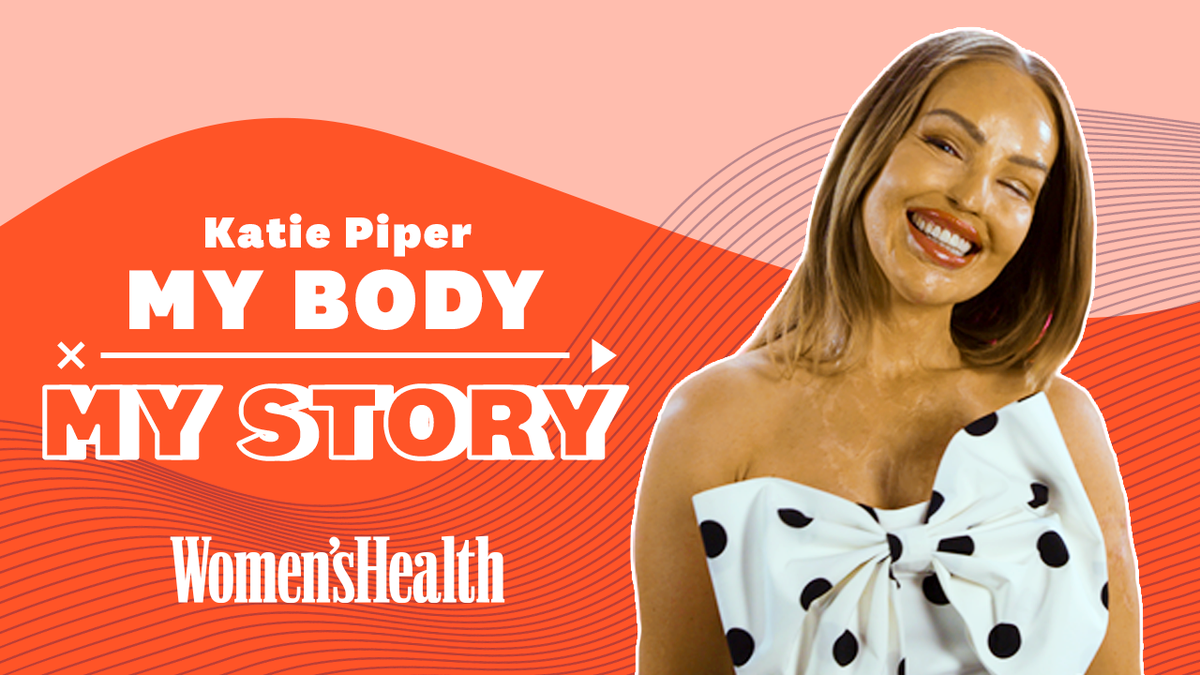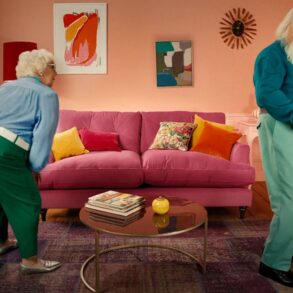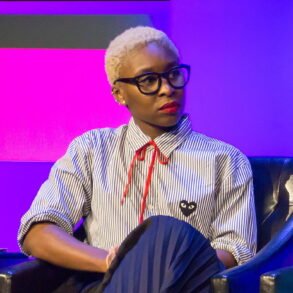As a teenager, watching Kelly Holmes, Christine Ohuruogu, the Downie Sisters, and Gabby Douglas was a staple in our household. These athletes were more than just competitors; they were icons, and their performances were events we didn’t want to miss.
So when Simone Biles first made her historic debut in the 2016 Olympic Games in Rio de Janeiro, we were tuned in with claps at the ready to celebrate yet another black women taking the games by storm.
A sight to behold, it laid the groundwork for her ascent to becoming the most decorated gymnast in history, having won a record-breaking eleven Olympic medals. But before the sweat had even dried on the gym floor, Biles name was trending on Twitter (now X) and while there was a landslide of messages praising her accomplishments, there was also another topic rearing its ugly head. Her hair.
That Biles’s accomplishments were overshadowed by criticism of her hair being “messy” and “unlaid” might seem ludicrous or shallow even, but beyond the surface, the incident highlights a broader issue – that hair, for many black women, still presents a unique barrier to entry for sport.
Exercise vs edges
Ask any woman of colour and most will likely reveal that their hair has become a battleground when it comes to exercise.
‘After years of yo-yo diets and little to no exercise I started taking my fitness seriously during the second year of university. I hit the gym twice a week, but before long, I was hooked, and those sessions quickly doubled to four times a week. When it came to my hair however, it was a different story.’
Since 28-year-old Esther started prioritising exercise, the Bristol based musician has gone from wearing weaves with a leave-out, to a ‘gym wig’ before settling on a rotational braiding routine for her hair. It’s a style that she says is the result of necessity over style.
‘Sometimes I’ll see a friend with a style that I’d love to wear, but doing so would require cutting down on my training sessions for the Hyrox World Championship. Plus, juggling work and life means finding the extra time to make sure I’m not sweating my edges out and well, it’s just not worth it.’
Esther’s relationship with her hair highlights a tricky intersection of culture and fitness, that despite research into why this occurs, consistently highlights the same pattern – Black women participate in sport significantly less because of their hair in comparison to their Caucasian counterparts.
‘Helmets, squashed coils, chlorine dries my hair out and “I don’t have a wig old enough to use for the gym” are just some of the concerns Esther says she currently hears from her friends and they’re feelings I’m also well aware of. And yet one positive is that during my time spent as a beauty journalist there has been a lot of work done to dispel many of the myths about afro hair. Most people are now aware that afro hair isn’t inherently “difficult” or wildly unpredictable, but ulitmately the truth of the matter is that kinks and coils do require one thing – time.
The time to wash and treat your hair, the time to style it in a protective style that can withstand rigorous exercise, time to learn what works best for you and your hair and yet it’s a resource that western work life balance structures often fail to accommodate.
When it comes to working out regularly the lack of accommodation is even more palpable. Be it finding the time to fix your edges after sweating out your silk press or knowing that even in a pinch the shampoo and conditioner in the gym is guaranteed to leave your hair parched. The ‘what should I do with my hair before I swim, run or sweat’ is a delicate dance anyone with afro-textured hair knows all too well.
‘It has got to a point where even though I prefer wearing my hair in weaves and leave out styles, I sacrifice style for practicality,’ continues Esther. ‘I don’t blame my friends that are just starting [to navigate the world of exercise] about feeling hesitant for essentially having change a massive element of their self expression.’
On a micro scale the acceptance of practicality over style might seem like a low price to pay for the benefits sports provide, but with braids and locs constantly on the receiving end of penalisation across sporting events, practicality has historically created its own set of problems. Just ask Venus Williams.
Breaking barriers
According to Ruth Essel, founder of Pointe Black Ballet, a community focused school based in South London that works to make ballet a more accessible sport, one answer is representation.
‘One of the biggest exasperations of cultural barriers to entry for Black women in fitness is the lack of representation across sport. Representation, no matter the level whether it’s the instructor, coach, the attendees, having different people with different needs forces you to troubleshoot and find inclusive solutions. That’s what changes culture’.
The effects of this gap in representation are already being felt according to Sport England. In their 2022-2023 survey into the active lives of people in the UK, Sport England found that only 36% of black girls in England are meeting recommended activity levels, compared to 48% of white girls, and in the past five years the number of black girls saying they enjoyed taking part in sport and physical activity has plummeted from 50% to 39%. It’s a reality I know all too well and should serve as a wake up call for us all.
To help women navigate ever changing beauty standards, especially ones that are culturally specific, Essel explains that support has to come from the institutions themselves. ‘As a ballet school owner and dancer, I remember my first pair of brown ballet shoes, and it changed my life – and my ballet practice. Tutorials that feature afro hair in a ballet bun could have the same impact.’
According to the ballet coach, long lasting change is dependent on a major shakeup. ‘The sports and fitness world needs a dramatic culture shift. Many people are completely unaware of the need for a cultural presence in fitness, including organisations and institutions and that’s where education is most needed.’ says Essel.
She adds that, ‘many people are oblivious to how eurocentric some sports can be, so having the voice in the room that can say hey, let’s have hijab fitness wear or black people wash their hair at the same frequency so let’s look at chlorine innovation – this is what is needed because ultimately no one will change what they don’t see.’
It’s a much-needed shift that has already – albeit slowly – begun. Last year, fitness apparel brand Gymshark released a sweatband specifically designed for Black hair and you’d be hard pressed to find a product list that doesn’t include Soul Cap. The swim cap designed for thick, curly hair and styles such as dreadlocks, weaves and braids was initially banned from the 2021 Olympics, but has since gone on to become a major access point for black swimmers and was named one of TIME Magazine Best Inventions in 2022.
However, Lorraine Russell, trainer and founder of NoirFitFest stresses that despite progression and innovation in this area, the work to prevent black women from being left behind in sports needs to go beyond nifty products.
The historical links between hair and its social currency are still a reality for black women. ‘Black women have a unique relationship with their hair. Historically Black hair has been used as a measure of how we view ourselves creatively, socially and personally but it has also been politicised,’ explains Russell.
Black Hair, Afro hair, coily hair, kinky hair – has always held social and cultural significance. In Pre-Colonial Africa – before the Slave Trade – traditionally, complicated braided, twisted and threaded styles would be used to express your status, whether or not you were married and if you went through puberty.
During colonisation, the texture was used as justification for the enslavement of Africans between the 16th to the 19th centuries. Stereotypes created during that time, ideas that portrayed black hair as being wild and untamed in order to discriminate against black people have since trickled down to every aspect and discussion about black hair in the west.
In order to address this bias head on, many black women over the last century have opted to chemically straighten their Afro hair in order to avoid abuse and stigma. Equally, in order to reclaim the narrative surrounding black hair, many black activists and scholars like Angela Davis have platformed the natural hair movement within their politic – first in the 1960s, when it was intertwined with the fight for civil rights, before a YouTube-powered resurgence in the early 2010s. Black women across the world began to embrace their own texture.
Despite this, the constant politicisation of black hair is still a major issue in the UK and beyond. According to a World Afro Day report, as of 2020, “anti Afro hair policies had risen 66.7%, and for adults who had experienced problems at school, only 27% said that hair policy was an issue, compared to 46% for today’s children.”
So even though, for many black people, Afro hair has become a symbol of pride and resistance against racism, it’s clear that on a wider scale how you choose to wear your hair still has deep cultural and social implications.
Due to this cultural weight, ‘Black women have had to prioritise our hair due to how we and the outside world views its importance. It’s tied to identity, socialisation [salons] and our history,’ says Russell. ‘This is not inherently a negative thing, but when prioritising it supersedes our desire to participate in a healthy and active lifestyle, it can be hugely problematic.’
More than hair
As with most communities, beauty standards differ widely for people of black descent. However with common ideals like curves and ‘womanly’ features so prevalent across these communities and within mainstream beauty standards, it’s easy to see how cultural barriers to sport goes much deeper than hair.
In 2018, a cartoonist tweeted his racist caricature of Serena Williams and Naomi Osaka at the US Open. Williams was drawn with exaggerated masculinized features, and studies have shown that in the US, 24.2% of NCAA Division I [black] female athletes and 30.7% of Division III [black] female athletes were either very dissatisfied or mostly dissatisfied with their overall appearance and more than 60% of elite athletes reported pressure from coaches concerning body shape. It’s a problem that affects black women in sports from the top down.
32- year-old Yinka, an avid swimmer who currently spends three mornings a week at her local pool knows all too well about the fear of becoming too muscle-y. ‘One of the first things one of my aunties said was “be careful not to get big arms, all those swimmers always have big arms’’. Even though I’m aware of the internal beauty standards that we black women often strive to uphold, it felt like an out of body experience being confronted with it by a relative and a few weeks after the conversation I found myself looking in the mirror for the “big” arms.’
For Yinka, she is adamant that outdated notions of black beauty shouldn’t be a barrier to entry for women who want to do sport, and yet the incident revealed they are. ‘I had a follow up conversation with my auntie about the remark because it was a big wake up call for me.’
It’s a tightrope situation, however, one that pits health against the very real social currency that adhering to mainstream beauty standards provides for some Black Women. One look at the mistreatment of icons like Serena Williams or hearing the first hand experiences of Olympic medallist Anyika Onuora is enough to show you what can happen when your body doesn’t adhere to the ‘slim, thin ’ mainstream beauty standard.
According to Russell, standards arounds body ideals from within black communities have also had an impact on how women are choosing to access sport. ‘Some Black women try to fall in line with whatever the trending aesthetic is. As a trainer, I am constantly asked “How to attain a certain body type” and they’ll pull up a photo of someone that they’ve seen online,’ she explains. ‘It’s sometimes a struggle to convince women to work with the body they have and develop the best versions of themselves rather than a look’.
The trainer notes that currently she finds many clients fall between two different beauty standards. ‘You’ll have someone that’s wants to build glutes, in order to fall in line with the current beauty aesthetic of having a “big butt”, but equally I find myself having to convince women that have often been told – incorrectly- that lifting heavy weights will make them “too masculine.” In my experience Black women hold this view more so than other female ethnic groups. So instead I will always try to get them to block out both sides of the noise in order to just work with their body .’
As with everything on the slippery slope that is beauty standards, ultimately as women it falls partly to us to make significant changes in order to reshape cultural notions. From advocating for funding, to supporting community led initiatives like Black Girls Do Run and Black Girl Swim Club. All the way through to pushing for increased representation and a renewed look at how body image can affect black girls participation in sport – Dove and Nike have teamed up and created some tool kits with this in mind – change starts with us and our words.
‘When I’m teaching classes,’ says Essel, ‘I always make sure to remind people that “Sis, you deserve to learn and work out in a place where you feel safe.”” Ultimately, says the ballet teacher ‘Fitness is for everyBODY- you don’t have to be a certain type of person to move your body.’
It’s a sentiment that I – the girl and now woman that sat in awe watching Kelly Holmes and Christine Ohuruogu – hope to adopt for myself. Exercise is and can be a fulfilling and worthwhile pursuit that hopefully one day all black women and girls will be able to enjoy to its fullest.
More beauty stories this way
Cut through the noise and get practical, expert advice, home workouts, easy nutrition and more direct to your inbox. Sign up to the WOMEN’S HEALTH NEWSLETTER
This post was originally published on this site be sure to check out more of their content.










